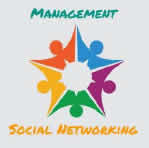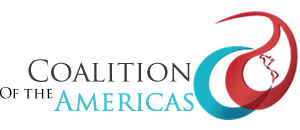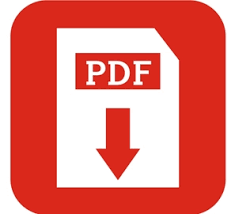Management and Transfer of knowledge
National Member Organizations
Biennial Work Proposal
INTRODUCTION:
America in recent decades has made great progress when it comes to people with hemophilia as well as other bleeding/coagulation disorders; This is largely due to the work of the World Federation of Hemophilia (WFH) and the commitment of the National Member Organizations (NMO) to carry out various Strategic Plans, with 2021-2025 being the one that reflects the premise “Treatment For All”.

Reaching this point was thanks to ONM’s commitment to improving patient records, and coordination with Health Care Providers (PAM) for access to treatments as well as new therapies, which have not only improved the quality of life of people with bleeding disorders and their families, but has also demonstrated the preponderant value that NMOs have in each country; This has led the WFH to prioritize “Establish standards of excellence for ONM and
support its adoption” as a priority for this five-year strategic plan.1
This position that they have assumed, as builders of social forces, consolidating action strategies on a scale The continental base has allowed, for example: the empowerment of patients and their families, the increase in patient registries in each country and greater access to various therapies.2 All of this
It has been achieved thanks to the commitment to redesign the educational and training offer of both the WFH and the Coalition of the Americas (COA), in order to maximize the impact on the ONM.
It is evident that the achievements achieved in this last decade are thanks to the work and Concentration of efforts of the ONM on the optimization of resources. The human capital that is not only diverse, but has been trained to strengthen its work in order to improve access to receive care and treatment in their country. From this articulation FMH – COA – ONM, the main objective can be achieved: increased access to diagnosis, treatment and care for people living with clotting disorders.
It is important to mention that Latin America and the Caribbean is today, according to WFH data, the continent that has the greatest growth in sustained patient registration and therefore the one that that will require the greatest number of opportunities for access and treatment. If we look at Europe, for example, it currently has a “ceiling” in relation to the registration of new unidentified patients.
Given that it has high percentages per country and in the entire registry, the same thing happens with the United States and Canada. These examples also have resources to ensure cutting-edge technology. treatments and new therapies, thus ensuring that future generations have already incorporated some concepts necessary to continue on that path. On our continent we must build this, which That is, the new generations must receive the knowledge of the ONM and its current leaders, but We must also sow the need to open up their treatment ideas so that they can think about different options, otherwise they won’t be able to do it. continue with the same management model and thus losing the opportunity to innovate with other alternatives.
For these actions to last over time and their achievements to continue bearing fruit, it is It is necessary for ONMs to develop new competencies, and for this internal feedback is necessary: promote, value and manage knowledge among all members of the Organization.
Clearly, the 21st century presents us with great challenges: advances in therapies, new Purchasing mechanisms and tendency to reassess the patient when making treatment decisions. process and, above all, new directions and challenges for ONMs where necessary. examine its lobbying models and advance a process of professionalization of its members as well as the modernization/innovation of its processes.
The COA together with the WFH sees it as unavoidable that to achieve the 2021-2025 strategy priorities, during the coming years, it is necessary to provide theoretical and practical tools to initiate the management and knowledge transfer process within the ONM. To achieve these objectives, the participation and commitment of each and every member of the ONM is vital, as as well as promoting the incorporation of young people to begin the transfer of the most precious intangible asset, which is knowledge; Thus, the ONM begin a process of consolidation and sustainability of knowledge management.
STATE OF SITUATION
The NMOs that make up the COA are national hemophilia organizations that represent interests of people with hemophilia and other inherited bleeding disorders in their respective countries.3
The constitution of these has been given by doctors, family members and/or patients with some type of bleeding/clotting disorders; All of them have been recognized by the WFH as ONM and since then its leaders, directors and partners have dedicated themselves to maintaining it. Today the COA sees it necessary to begin focusing ONMs towards value creation and sustained development. suitability, two essential elements in the current environment, characterized by changes and Imperative need to adapt to new realities.
To do this, the Knowledge Management that must be carried out by the members with the most experience For the new generations that join, it is essential not only to define the vision, the processes and structures but also to guide new strategies with the PAM.
ACTION PLAN
The work plan with the ONM will be a roadmap that has goals and objectives, respecting the identity of each Organization because we understand that each Country has its idiosyncrasies, and there will be as many paths as ONM to achieve the goals, meet the objectives and achieve results. within the next 12 months within the framework of the proposed work plan.
It must be understood that change management consists of accompanying people in organizations during the transition from the current situation to the desired situation; under this framework will address the following:
- Tools to facilitate the successful implementation of transformation strategies processes.
- Identification and addressing antagonistic factors: personal – organizational resistance barriers.
- Characterization and management of commitment factors.
- Perception of strengths, opportunities, weaknesses and threats by NMOs
- Design of a strategic action plan for the ONM
- New ways to track and monitor the processes of change and consolidation of new habits indeed.
1 Strategic Plan 2021-2025 of the World Federation of Hemophilia. Available at https://wfh.org/wpcontent/
uploads/2022/04/WFH-Strategic-Plan-2021-2025-ES.pdf
2 World Federation of Hemophilia Annual Global Survey. Available in https://wfh.org/research-and-data-collection/annual-global-survey/
3 Find local support https://wfh.org/find-local-support/

